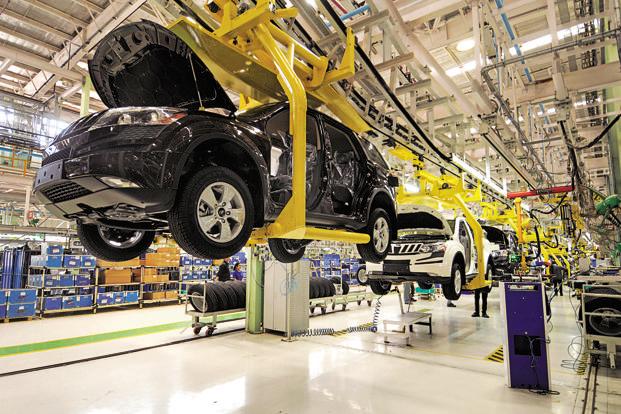The Indian automotive industry is one of the fastest-growing markets in the world, accounting for a large share in the Indian economy. The automotive sector, which is critical for the country to establish its manufacturing footprint, is at the cusp of transformation. It has seen significant evolution in the last three to four decades. India has witnessed a vast number of increasing investments in R&D and geographic expansion from global automotive manufacturers. Innovation is driving new technologies, leading to potential disruption, new product development, and globalization imperatives. Today, automotive companies are designing vehicles from the ground and taking them to other markets. An Indian consumer today has a gust of choices due to its evolution. The penetration of electronics in the automotive industry has been increasing significantly. Indian software firms now have wider opportunities and can now play a pivotal role by forming effective partnerships with industry stakeholders to create an even bigger market.
KPMG India analysis, 2015:
The automotive industry contributes approximately 22 percent to the country’s manufacturing GDP. In recent years, the automotive industry ranked sixth in attracting FDI equity, with a cumulative inflow of approximately INR681 billion from April 2000 – April 2015. Successful formulation and changes in policies have also been made by the government to support the industry.
In 2014-15, the industry registered a growth of 8.68 percent over the same period last year by producing 23 million vehicles. While the domestic sales of passenger vehicles, three-wheeler, and two-wheeler in April 2014 grew, commercial vehicles registered a negative growth, which was credited to muted economic activity. Exports across almost all vehicle segments showed positive growth during the same period.
Back in the 1970s, India was a closed market with a restrictive regulatory environment and growth was limited by supply, outdated auto(Rikshaw) models, high duties and sales taxes. Delincencing of the automotive sector was then marked by the Liberalization period with automatic approval for Foreign Direct Investment (FDI) up to 100 percent equity. The period also saw an entry of the key automotive OEMs and suppliers into the Indian market through organic or inorganic routes. Although, The Indian Automotive industries are still lagged behind maximum countries, however, moves by government such as the National Electric Mobility Mission Plan (NEMMP) 2020 launched by the government to provide demand-side incentives with R&D focus, Faster Adoption and Manufacturing of Hybrid and Electric vehicles (FAME India) to increase the adoption of electric and hybrid vehicles in India seem to be positive sign for an industry that is still in its nascent stage with an underdeveloped supply chain.
In a few recent years, the Indian government has started focusing on tighter emission norms to regulate air pollutants from vehicles and is promoting green vehicles. The manufacturing industries have also become attentive to the alarming climatic condition. Safety has also been attracting governmental attention. Evolving technologies and trends such as connectivity, lightweight and electronics have added to these complexities. Despite all the complexities the industry may have faced, it has proven to be an important segment contributing to India’s GDP.
Indian start-ups such as Ola has raised $1.1 billion to invest in AI and ML capabilities. Swaayatt Robots is developing on-road and off-road self-driving technology designed for use in India’s extremely difficult traffic scenarios and unstructured environmental conditions by enabling self-driving vehicles to perceive their environments using off-the-shelf cameras.
Intuition Systems, another Bengaluru-based AI startup, is foraying into the automotive industry focused on developing urban commuter automobiles, currently named ‘Project-Puli’, under the brand name Kat Motors. This will be an intelligent, semi-autonomous, electric and hybrid, pollution-free, cost-effective and reliable and exclusively designed to serve crowded Indian and Asian cities which are planned to be introduced by 2020, and simultaneously the feasibility of efficient, autonomous airborne consumer transportation vehicles will be tested to bring relief to Indian roads.
SeDriCa, an autonomous ground vehicle by IIT Bombay’s Innovation Cell, plans to use global positioning system (GPS)/inertial navigation system (INS), light detection and ranging (LiDAR) and stereo cameras to gather information about the immediate environment at different ranges.
Indian firms, on the other hand, have also been offering core competencies in ML, sensor fusion, computer vision technologies, motion planning, and control, amongst others. A number of companies in India have taken a step to change India’s perspective of self-driving technology at a global level. For instance, Tata is willing to invest in this field, TCS is developing self-driving Nano, Infosys is working on a self-driving rickshaw and Tech Mahindra has reported interest in working on an autonomous driving system.
India has now become a coveted market not only for global vehicle manufacturers but also for component suppliers. Most of the vehicle manufacturers in today’s era consider India as a big target market and a key part of their global strategy. However, to realize its potential, the automotive industries in India may have to be mindful of the challenges that the global automotive sector is facing and adapt to the changing dynamic environment. To keep up this growth the industry has to overcome challenges in technology, environment, high capital costs, capacity utilization, infrastructure, input costs, government policies, and human capital. Investments in technology and collaboration with the supply chain also need to be vitally focused.
By Nikunj Agarwal


